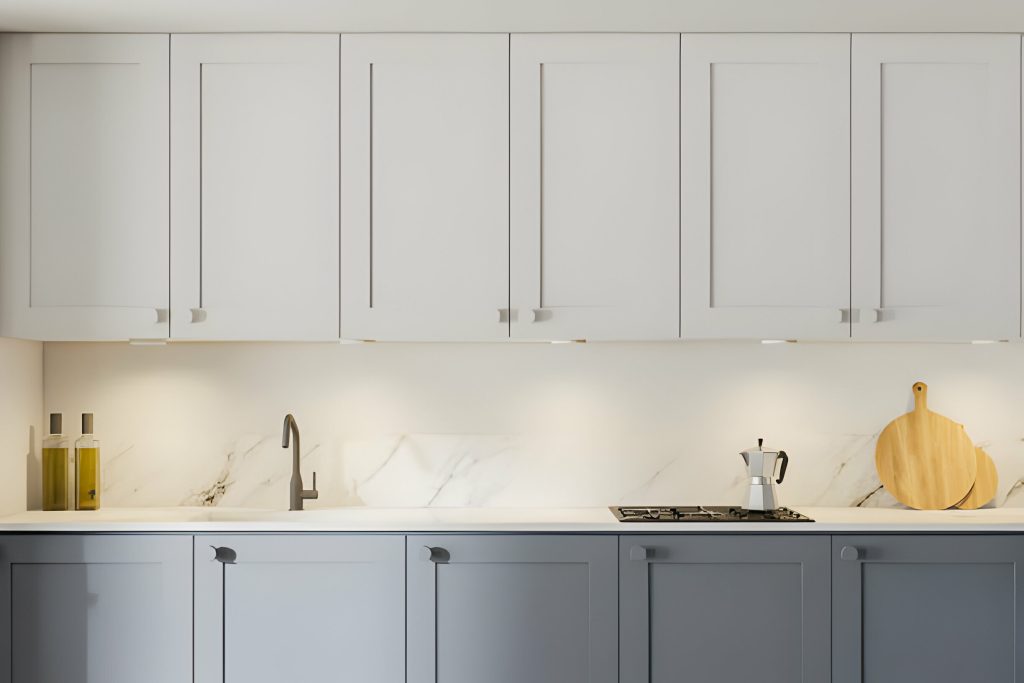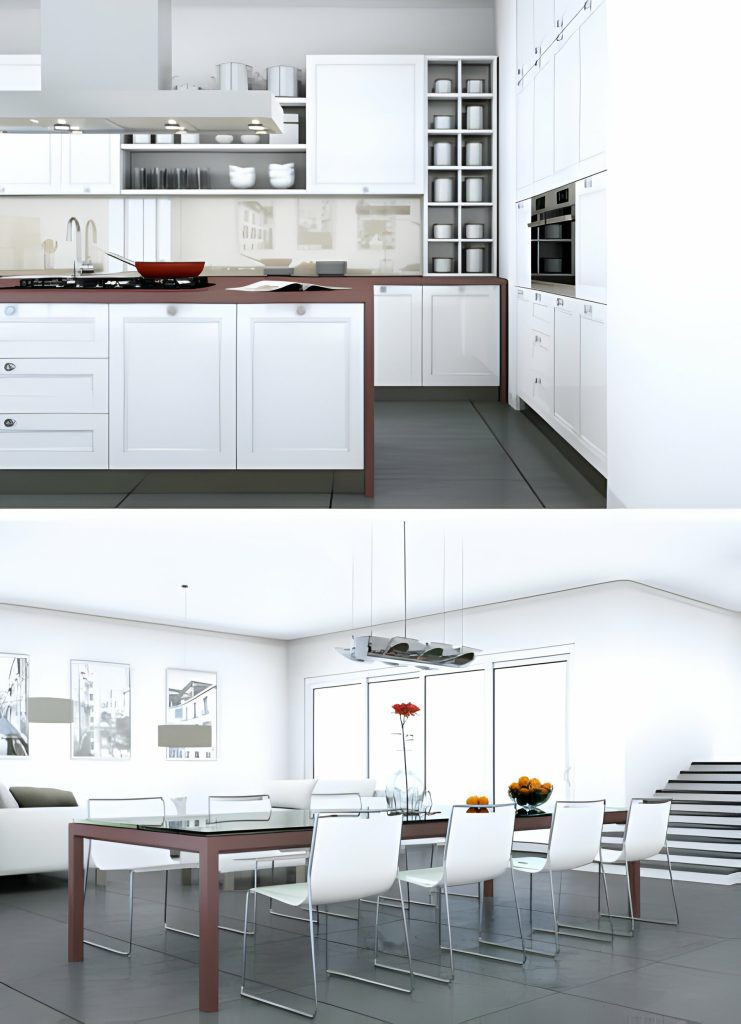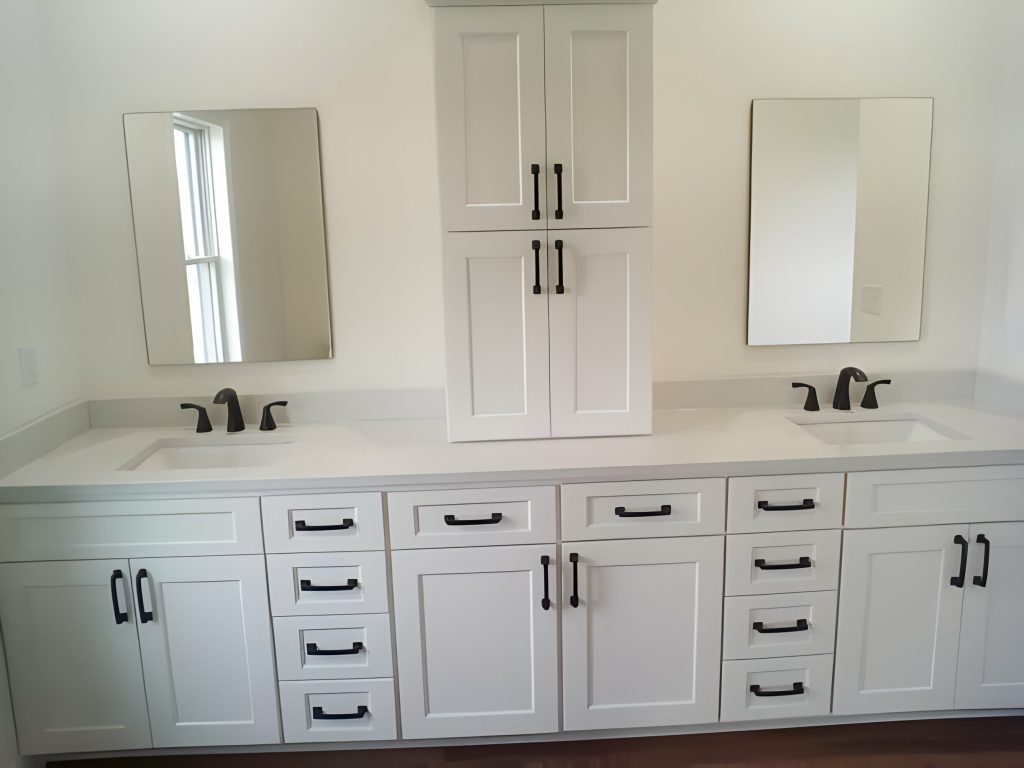If you’re looking to spruce up your kitchen and add a touch of elegance, replacing your cabinet doors with glass is the way to go. In this article, we’ll show you step by step how to tackle this project. You’ll learn how to measure your cabinet doors, choose the right type of glass, remove the old doors, install the glass, and reattach the doors to your cabinets. Get ready to transform your kitchen with this simple yet stunning upgrade.
Measuring Your Cabinet Doors
To start measuring your cabinet doors, begin by removing them from their hinges. This will allow you to have a clear and unobstructed view of the doors, ensuring measuring accuracy. It’s important to measure each door individually, as even slight variations can affect the fit of the glass. Use a tape measure to measure the height and width of each door, making sure to record the measurements accurately. When measuring the height, start from the top edge of the door and measure down to the bottom edge. For the width, measure from one side of the door to the other. Take note of any hardware, such as hinges or handles, that may affect the measurements. Once you have measured all the doors, it’s time to choose the appropriate hardware for the glass installation. Consider the weight and thickness of the glass when selecting hinges and handles. This will ensure that your cabinet doors not only look great with the glass, but also function properly.
Choosing the Right Type of Glass
When choosing the right type of glass for your kitchen cabinet doors, consider your personal style, the level of privacy desired, and the overall aesthetic of your kitchen. There are various types of glass finishes available that can enhance the look and functionality of your cabinets.
One popular option is clear glass, which allows maximum visibility and is perfect for displaying your beautiful dinnerware or glassware. If you prefer a more decorative look, you can opt for frosted or etched glass. These types of glass provide a level of privacy by obscuring the view but still allow light to pass through.
If you want to add a touch of elegance and sophistication to your kitchen, consider using tinted or colored glass. These options come in a variety of shades and can coordinate with your kitchen’s color scheme. Additionally, you can choose textured or patterned glass for a unique and artistic look.
When it comes to cleaning glass, it is important to use the right products and techniques to avoid streaks and smudges. A mixture of vinegar and water or a glass cleaner specifically designed for this purpose can effectively remove dirt and grime. Use a lint-free cloth or a squeegee to wipe the glass and leave it sparkling clean.
Removing the Old Cabinet Doors
To remove the old cabinet doors, you will need a screwdriver to unscrew the hinges from the frame. Follow these steps to successfully remove the doors:
- Start by opening the cabinet doors fully. This will make it easier to access the hinges and screws.
- Locate the screws that attach the hinges to the cabinet frame. These are usually located on the inside of the cabinet.
- Using a screwdriver, carefully unscrew the hinges from the frame. Be sure to support the weight of the door as you remove the screws to prevent any damage.
- Once all the hinges are unscrewed, gently lift the door off the frame and set it aside.
While removing the old cabinet doors, it’s a good time to assess the condition of the cabinet frames. If you notice any damage, such as cracks or loose joints, you can take this opportunity to repair them. This will ensure that the new glass doors are properly supported and will last longer.
Additionally, if the old cabinet doors are still in good condition, consider upcycling them for other purposes. You can transform them into decorative wall art, a room divider, or even repurpose them as tabletops. This is a great way to reduce waste and give new life to old materials.
Installing the Glass Into the Cabinet Doors
Now, let’s move on to installing the glass into the cabinet doors using the following steps.
- Start by measuring the dimensions of the glass panels and mark them on the cabinet doors. Ensure that the measurements are accurate to avoid any fitting issues later on.
- Next, carefully remove the protective film from the glass panels, if there is any. Make sure to handle the glass with care to prevent any breakage or injury.
- Apply a thin layer of silicone caulk or adhesive around the edges of the glass panels. This will help properly seal the glass edges and prevent any moisture or dirt from entering the cabinet.
- Gently press the glass panels into the marked areas on the cabinet doors. Ensure that they fit snugly and are centered within the door frame.
- To add decorative elements to the glass doors, you can consider using adhesive window film, decorative window decals, or frosted glass spray. These options will enhance the appearance of the glass and provide privacy if desired.
- Allow the silicone caulk or adhesive to dry completely before handling the cabinet doors. This will ensure that the glass is securely attached and properly sealed.
Reattaching the Cabinet Doors to the Cabinets
Attach the cabinet doors back onto the cabinets using the following steps:
- Start by placing the first door onto the hinges. Ensure that the hinges are properly aligned with the holes on the cabinet frame.
- Use a screwdriver to secure the hinges to the cabinet frame. Make sure the screws are tightened enough to hold the door in place, but avoid over-tightening them.
- Repeat the process for the remaining doors, aligning the hinges with the corresponding holes on the cabinet frame.
- Once all the doors are attached, check the alignment. If any of the doors are not aligned properly, you may need to adjust the hinges. To do this, loosen the screws slightly and gently move the door until it is in the desired position. Then, tighten the screws again.


